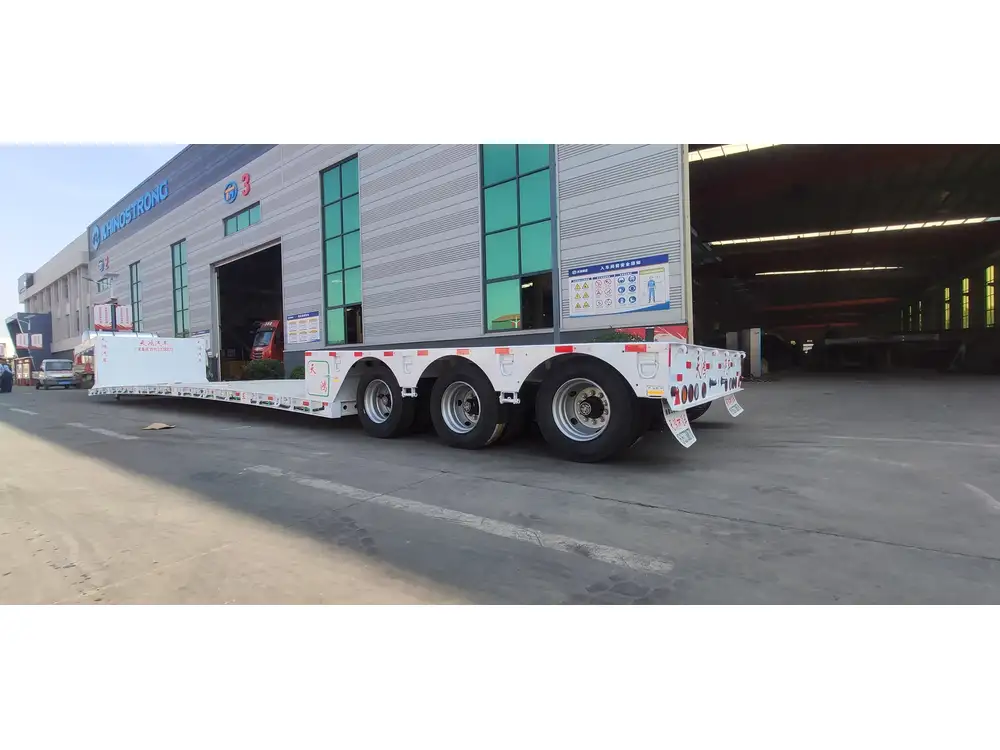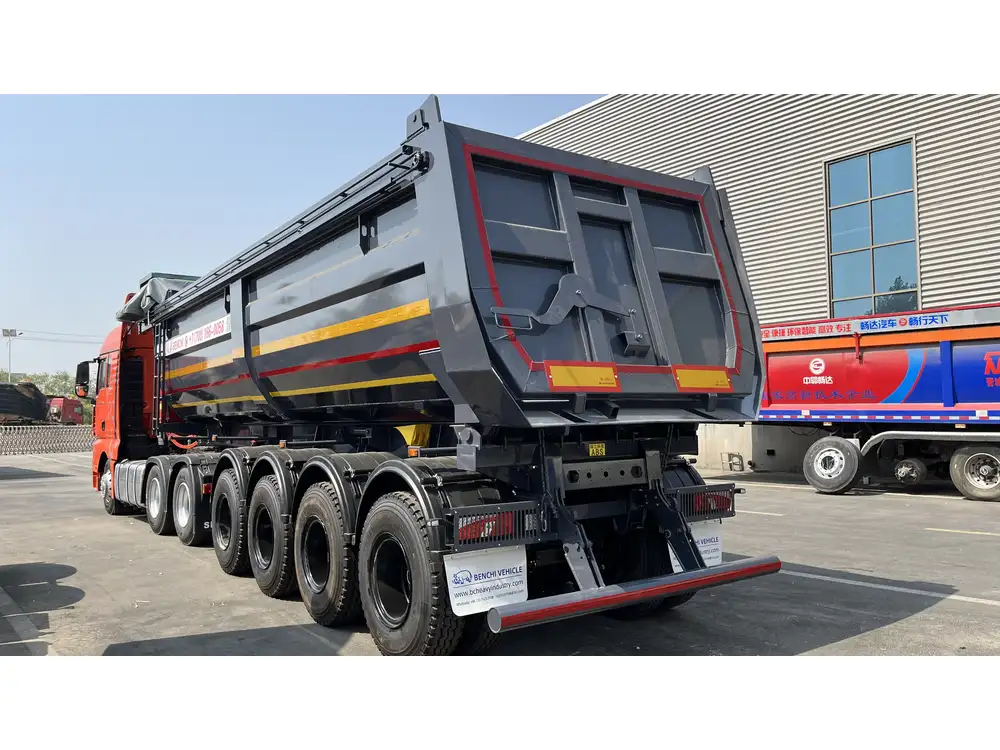Maintaining clean water tanks is vital for those who rely on semi-trailers for transporting fresh water. Not only do dirty tanks pose health risks, but they also diminish the quality of water carried. This guide provides a detailed approach on how to clean a trailer water tank, ensuring you adhere to best practices for hygiene, safety, and efficiency.
Understanding the Importance of Clean Water Tanks
Maintaining a clean trailer water tank is non-negotiable, bearing significant implications for health, safety, and operational efficiency. Contaminants such as sediment, algae, and bacteria can proliferate in water tanks, leading to serious health hazards. Regular cleaning can prevent:
- Contaminated Water Supply: Ensures that only potable water is delivered.
- Water Odor and Taste Issues: Eliminates unpleasant smells and tastes that often accompany stagnant water.
- Equipment Wear and Tear: Prevents deposits from accumulating, which can damage pumps and valves over time.
Safety Precautions Before Cleaning
Before embarking on the cleaning process, it’s imperative to prioritize safety. The following precautions should be taken:
| Safety Precaution | Description |
|---|---|
| Wear Protective Gear | Gloves, goggles, and masks protect from chemicals and contaminants. |
| Ensure Proper Ventilation | Work in a well-ventilated area to avoid inhaling harmful fumes. |
| Use Non-toxic Cleaners | Opt for eco-friendly cleaning agents to safeguard water quality. |
| Shut Off All Electrical Equipment | Prevent shocks or accidents by turning off power sources. |

Tools and Supplies Needed
Gathering the right tools and supplies will ensure an efficient and effective cleaning process. Here’s a comprehensive list of what you will need:
- High-pressure Washer: Essential for removing stubborn residues and contaminants.
- Scrub Brushes: Various sizes for accessing tight spaces.
- Garden Hose: For rinsing purposes.
- Non-toxic Cleaning Solution: A mixture of water and vinegar or specialized tank-cleaning agents.
- Siphon Hose: Useful for draining water completely.
- Vacuum Pump: If used, will assist in removing residual water and sediment.
Step-by-Step Guide on How to Clean a Trailer Water Tank
Step 1: Drain the Tank
Task: Begin the process by draining any remaining water from the tank.
- Locate the Drain Valve: This is commonly situated at the bottom of the tank.
- Attach a Siphon Hose: For speed and ease, connect the siphon hose to drain water into a suitable container.
- Ensure Complete Drainage: Leave the valve open for a few minutes to rid the tank of residual water.

Step 2: Inspect for Damage
Task: Check the tank for any signs of corrosion, cracks, or leaks.
- Visual Inspection: Look for discoloration or rust on the walls.
- Physical Inspection: Tap the sides of the tank to listen for any hollow sounds indicating damage.
Step 3: Prepare the Cleaning Solution
Task: Create a potent yet safe cleaning solution:
- Vinegar Mixture: Mix one part vinegar to three parts water.
- Commercial Cleaners: If available, opt for tank-specific cleaners that guarantee thorough sanitation.
Step 4: Apply the Cleaning Solution
Task: Introduce the cleaner to the tank effectively.
- Fill the Tank with the Solution: Using a hose or bucket, fill the tank partially with your cleaning solution.
- Agitate the Mixture: Use a scrub brush to mix and ensure the solution coats all surfaces.
- Allow to Soak: Let the solution rest for at least 30 minutes, giving it time to break down contaminants.

Step 5: Scrub the Interior
Task: Now, scrub the entire interior of the tank thoroughly.
- Use High-Pressure Washer: Direct high-pressure water to remove residues, ensuring all areas come into contact with the water stream.
- Focus on Corners and Edges: Pay particular attention to corners and crevices where grime tends to accumulate.
Step 6: Rinse the Tank
Task: Following scrubbing, it’s vital to rinse the tank completely.
- Flush with Clean Water: Use a garden hose to fill the tank with fresh water and either let it drain or use a high-pressure washer to remove all cleaning agents and loosened debris.
- Repeat Rinsing: You may need to rinse multiple times, ensuring no cleaning residues remain.
Step 7: Final Inspection
Task: After the cleaning is complete, conduct a final inspection.
- Check for Leftover Debris: Examine the tank to ensure every nook and cranny is clean.
- Odor Check: Ensure there’s no lingering odor, which could indicate failed cleaning.

Step 8: Drying the Tank
Task: Before closing the tank, it’s essential to dry it adequately.
- Leave the Lid Open: Allow for proper air circulation.
- Use Fans if Necessary: Induce drying with portable fans if the tank remains wet for too long.
Maintaining a Clean Trailer Water Tank
Once you’ve successfully cleaned your trailer water tank, maintaining its cleanliness is key. Consider the following best practices:
| Best Practices | Description |
|---|---|
| Regular Inspections | Check the tank at least every quarter for any buildup or signs of wear. |
| Annual Deep Cleaning | Schedule a thorough cleaning at least once a year. |
| Use a Water Treatment System | Consider installing filters or treatment systems to mitigate contamination. |
| Keep Water Levels Consistent | Avoid stagnant water by ensuring regular use and periodic replenishment. |
Common Problems & Solutions
As with any system, users may face challenges with trailer water tanks. Below are common issues and their solutions:
| Problem | Solution |
|---|---|
| Unpleasant Odor | Increase cleaning frequency and use specialized odor-fighting agents. |
| Sediment Buildup | Regularly flush the tank and install filters to reduce dirt intake. |
| Corrosion | Inspect tanks periodically and paint with corrosion-resistant coatings. |
| Water Quality Issues | Test water regularly and adjust cleaning practices as needed. |

Conclusion
In conclusion, learning how to clean a trailer water tank is essential for maintaining water quality and ensuring user safety. Employing the steps outlined above, combined with consistent maintenance, will foster a clean water supply for years to come. By staying proactive and attentive to the tank’s condition, users can avoid contamination risks and ensure the trailer remains a reliable source of potable water.
Key Takeaways
- Cleaning the trailer water tank is a critical process for health and safety.
- Follow systematic steps, ensuring all tools and safety protocols are adhered to.
- Regular maintenance and inspections can prolong the life of your trailer water tank.
By prioritizing these practices, you will ensure not only compliance with hygiene standards but also enhance the reliability of your water transportation process. Through diligence and routine care, clean water will remain just a tank away.



